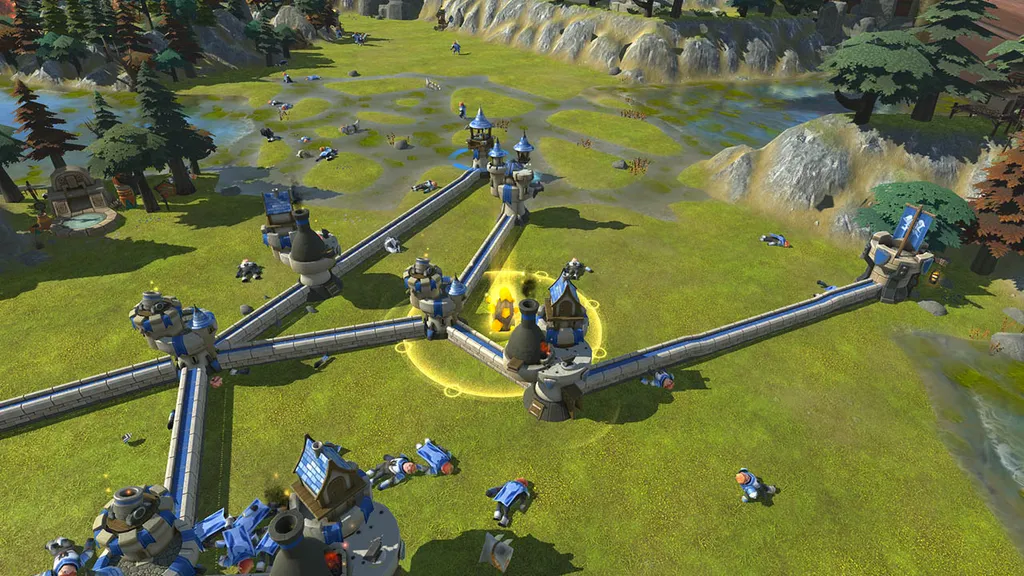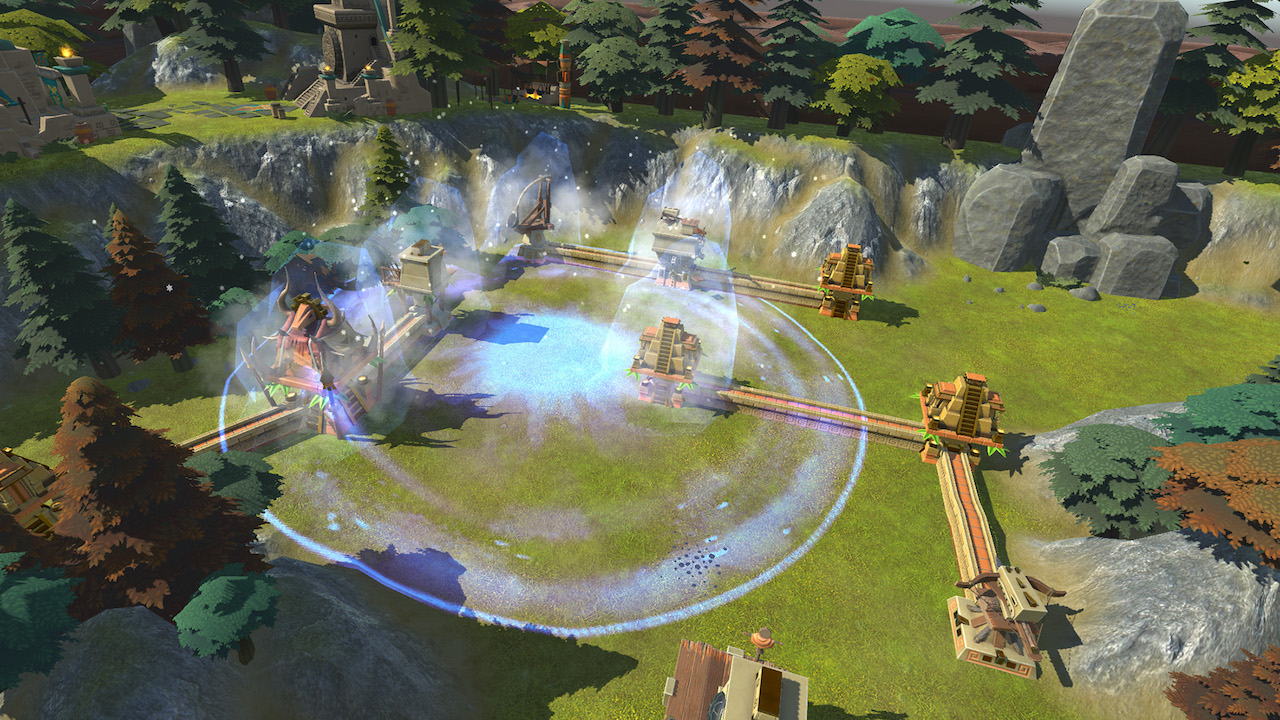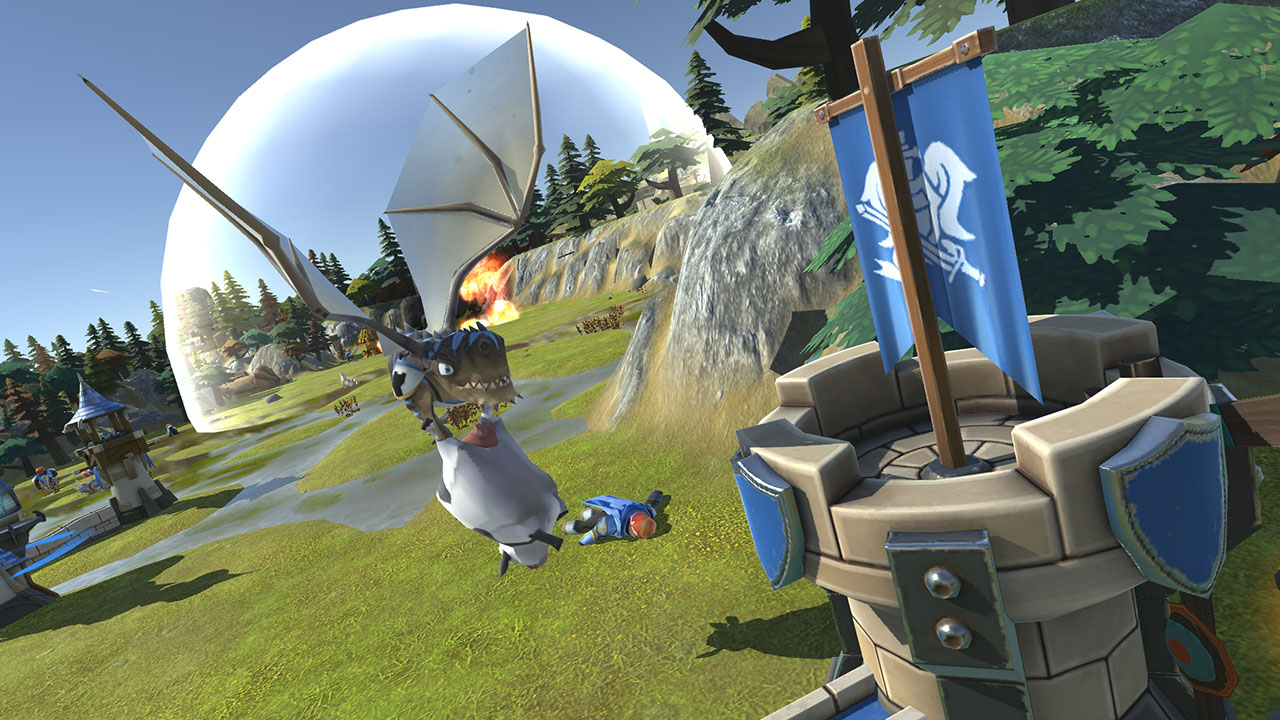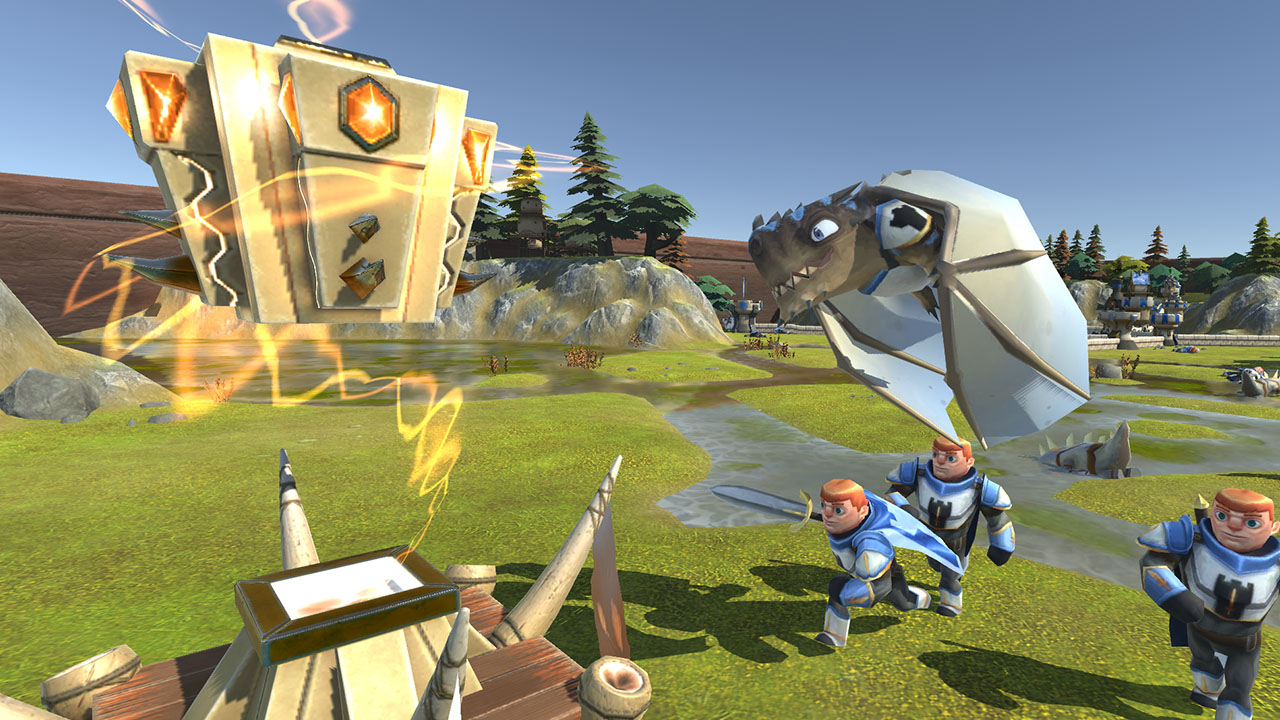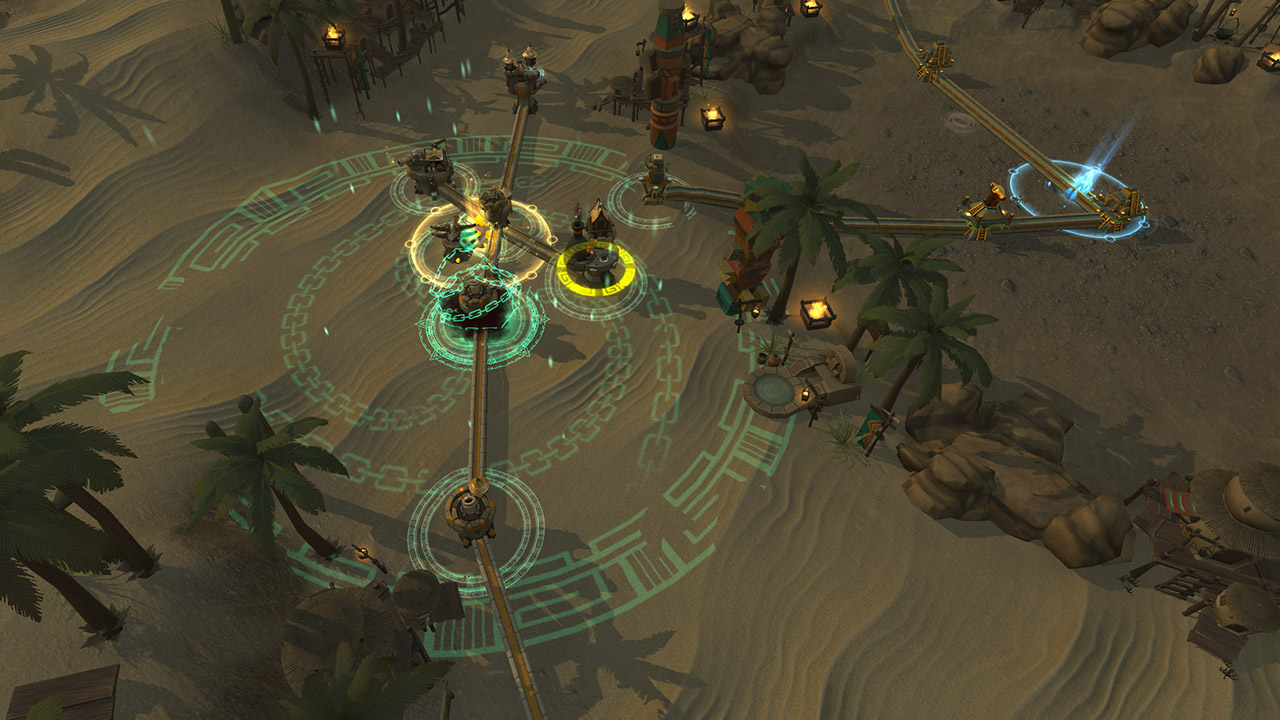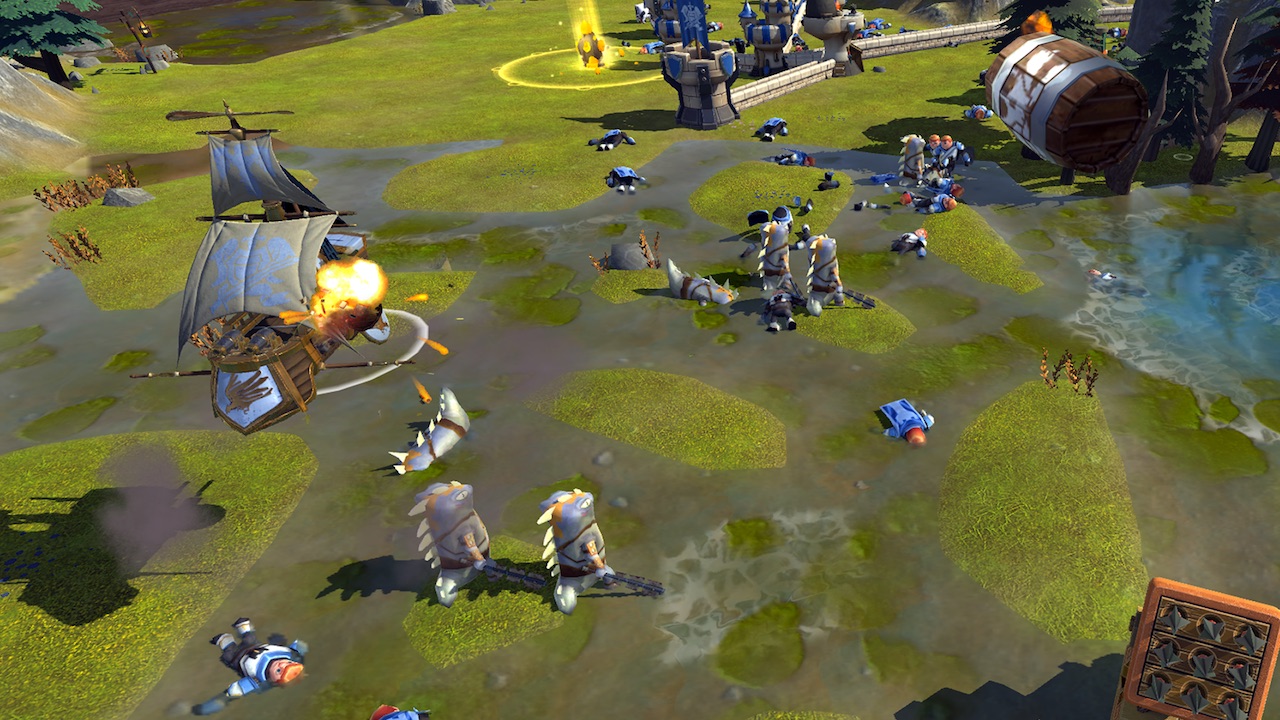Making a compelling strategy game experience is a difficult balance. Creating compelling gameplay mechanics that are fun to perform a thousand times across multiple games and campaigns is hard enough, but then add in the mixture of A.I. opponents, actual human opponents online, and the delicate nature of balancing different factions across their various roles and abilities, and it’s easy to tell why a good strategy game is difficult to come by. Siegecraft Commander is the latest endeavor trying to make a name for itself in the genre, this time with VR support as well.
Since Siegecraft Commander is not a VR-only title, or even a game that appears to be designed with VR in mind, the result is a bit of a mixed bag. The VR perspective delivers a certain degree of intimacy to the chaos, but it does very little in the way of adding any improvements to the core experience.
In Siegecraft Commander you’ll be tasked with turning your outposts, such as your base’s Keep, into a slingshot-esque cannon. By pulling back and aiming the trajectory, you can shoot out explosive barrels that are used to attack enemy bases and troops, which requires a surprising layer of dexterity for all nuanced game interactions. Since this same mechanic — shooting from a slingshot — is used to actually place new structures on the map, you’ll be forced to develop your aiming skills very quickly.
It’s a clever idea. Since every building is created as an extension of another, this results in a web-like layout of your kingdom over the course of a match and helps you visually plot you progression across a map. It looks much more deliberate and dynamic than just a few hubs placed in key locations throughout an area.
The problem is that a game in which you are required to do the same thing over and over (such as shooting things from a slingshot) should make that core mechanic an addictive and fun part of the gameplay. For example, Angry Birds did a wonderful job of this on mobile devices. While Siegecraft Commander is a very different game, it does rely on a similar gimmick to advance any aspects of the experience. Unfortunately it’s nowhere near as compelling.
Aiming is difficult and it gets monotonous when you’re forced to use the same method for the overwhelming majority of your actions during battle. After a few minutes, I ended up wishing for an option to simply point and click to a location on the map to build a structure — or better yet — to be able to pick and up and place a structure on the map using my motion controllers.
This is compounded by how frantic things get in the real-time combat modes, although you can play the game in a turn-based system as well. That’s more manageable, but still doesn’t resolve the root of the game’s problems.
While in VR the desire to reach out and place structures was strong, but the need for a more comfortable experience was even stronger. Since everything takes place from a God-like perspective, you’ll spend a lot of time hanging your neck down looking at the ground. While it makes sense given the lore and setting of the game universe, it was painful in practice. VR headsets aren’t the lightest things in the world and they can result in neck strain much more quickly than you’d think. Having a sore neck for the rest of the day after playing this game for a few hours isn’t pleasant and further proves how little thought and care was given to the VR experience.
There are fun and novel ideas at the center of Siegecraft Commander — such as the unique base building and inventive use of slingshot-style mechanics — but it doesn’t translate well to VR. After playing my neck hurt and I found the controls less than precise. If a bit more polish had been given to the VR integration it could have helped elevate things, but at the end of the day it felt more monotonous than strategically rewarding.
You can purchase Siegecraft Commander from Steam for $19.99 with official HTC Vive support. Read our Game Review Guidelines for more information on how we arrived at this score.

